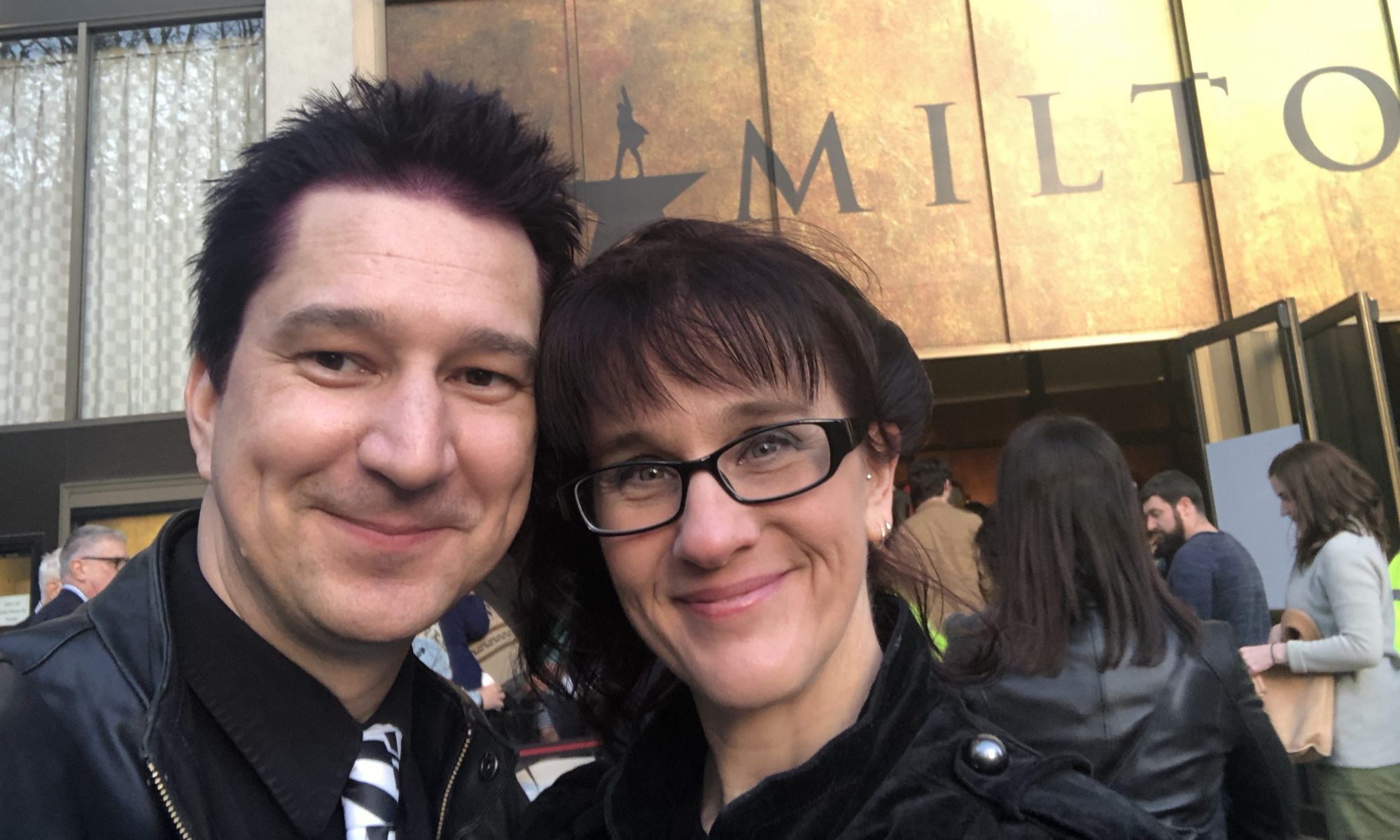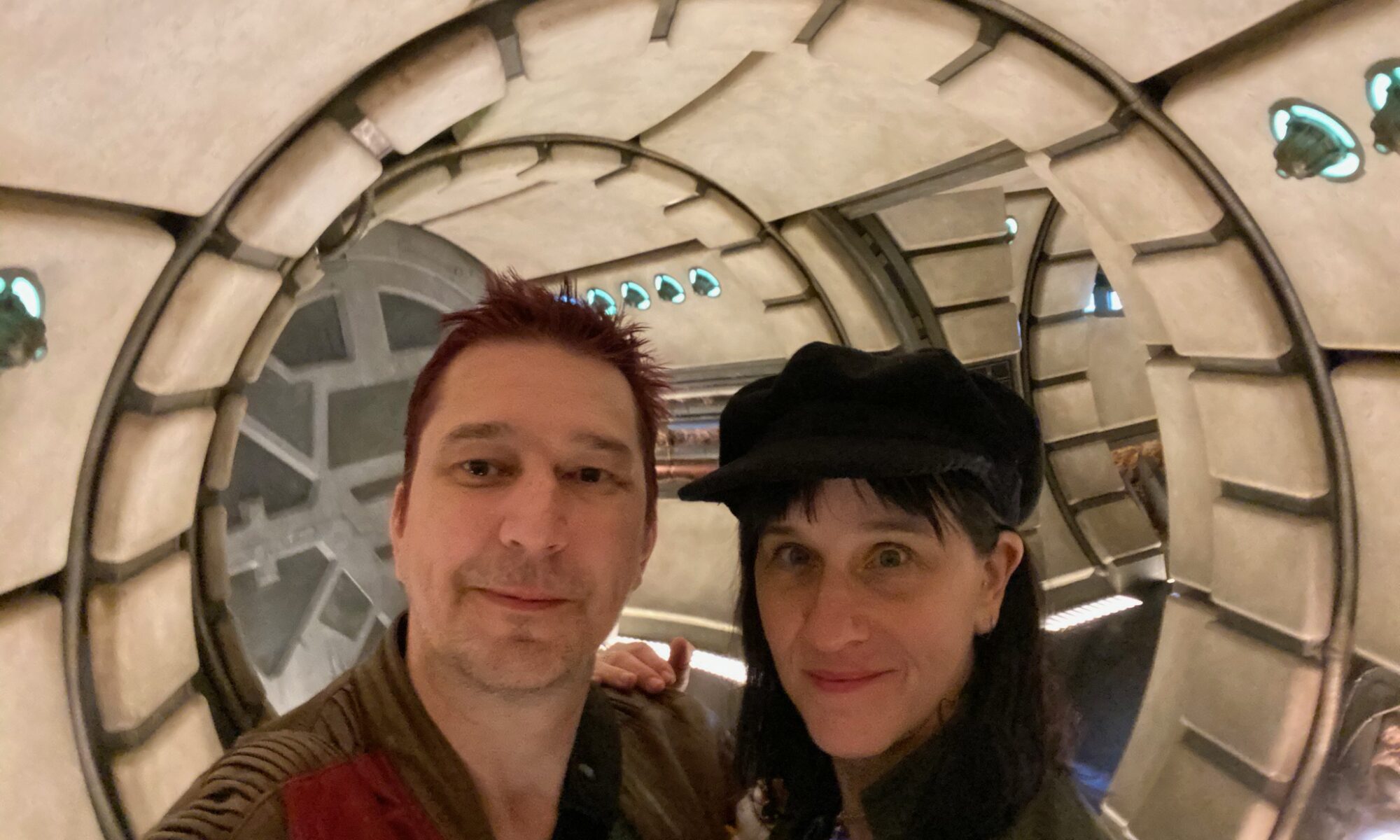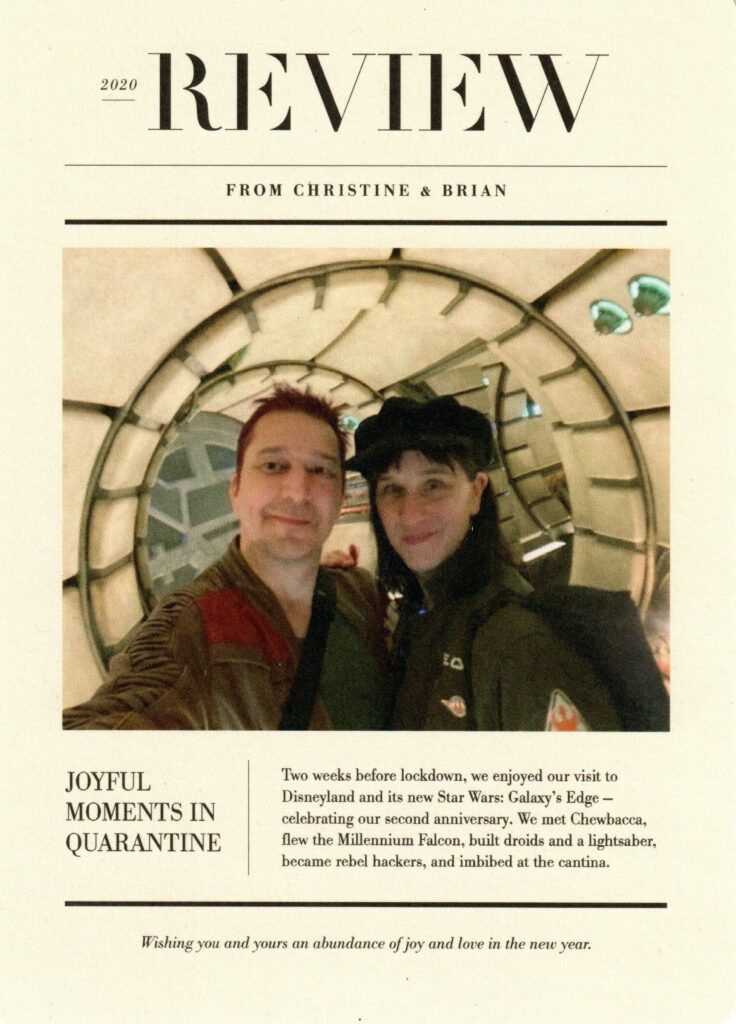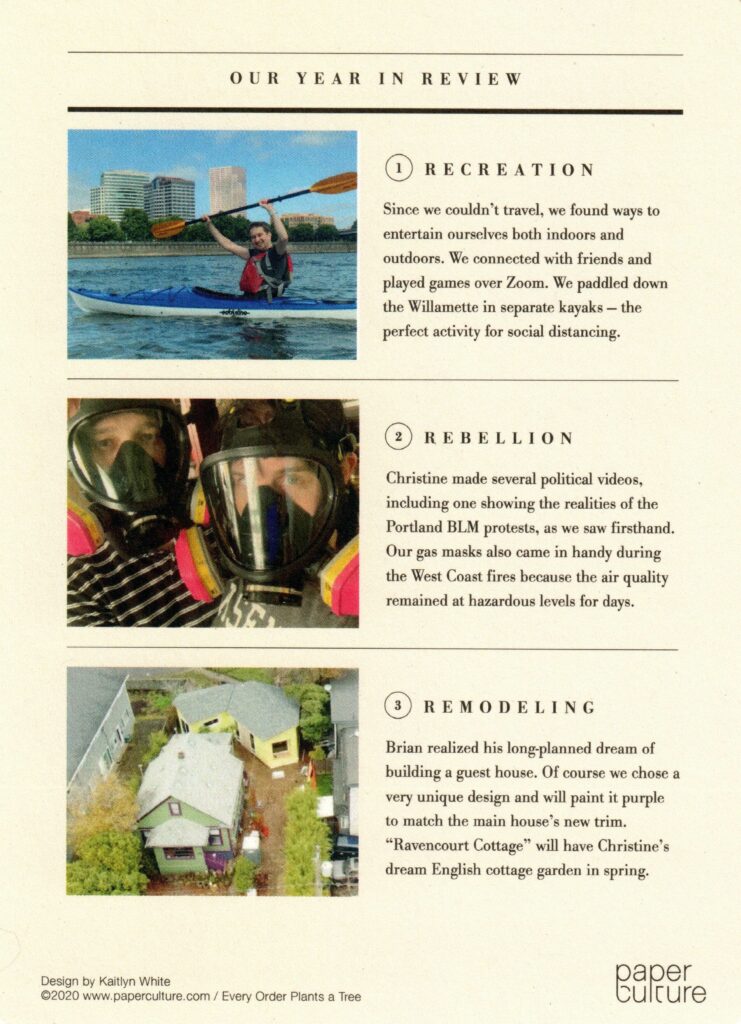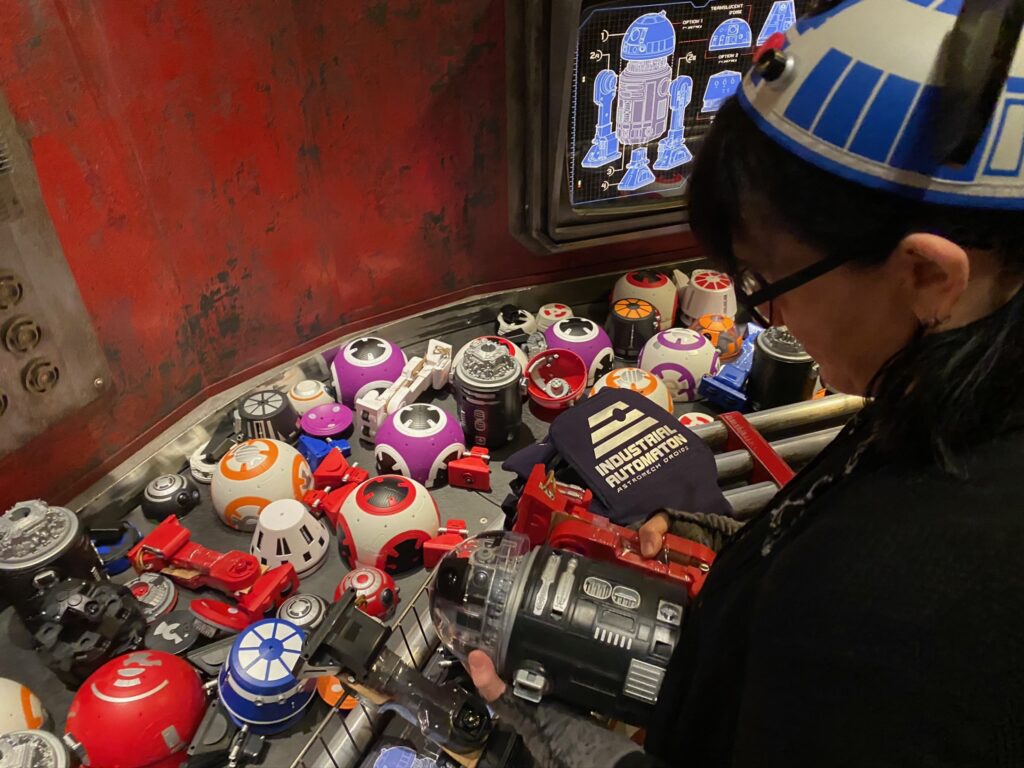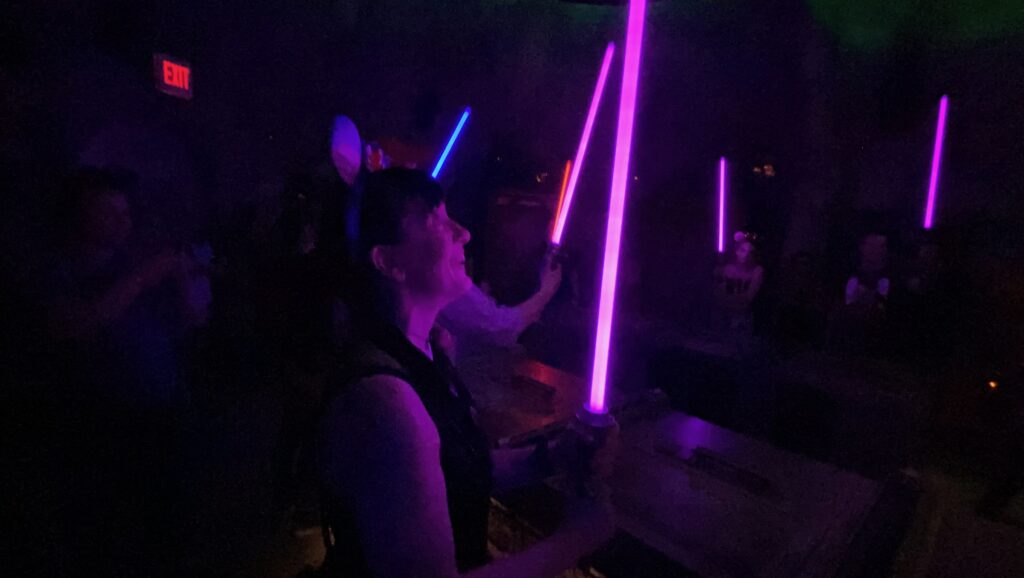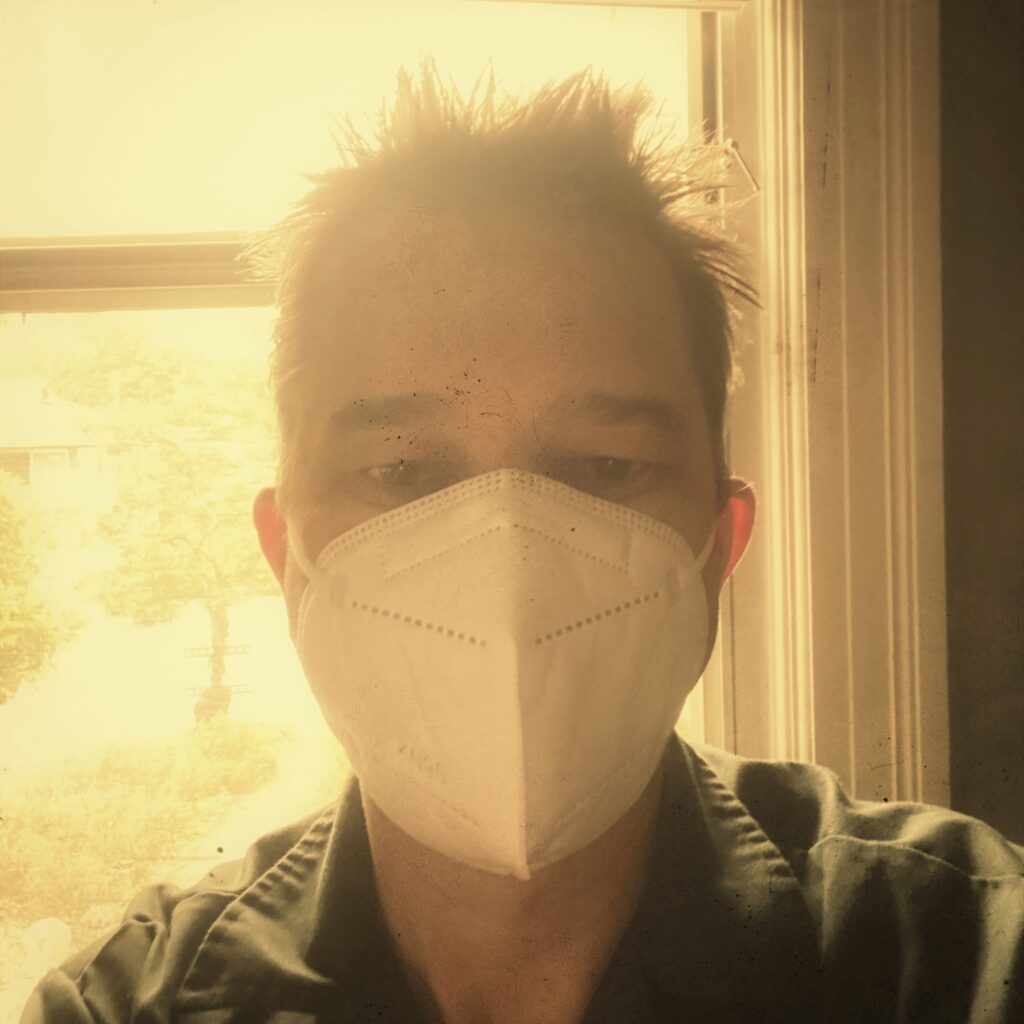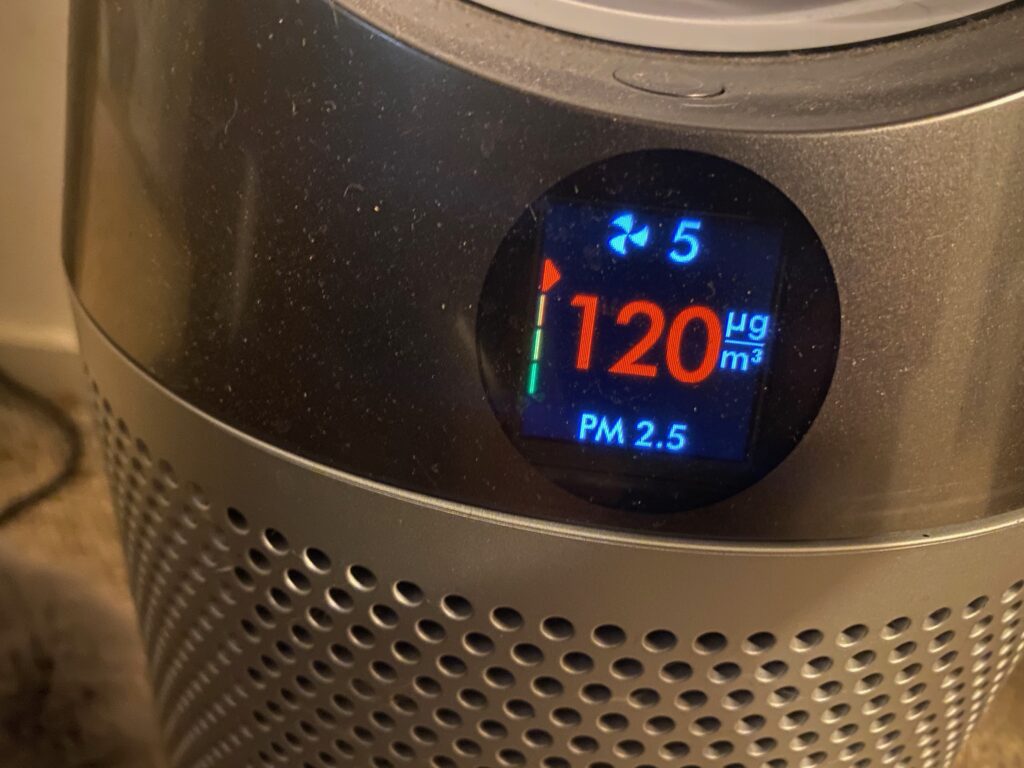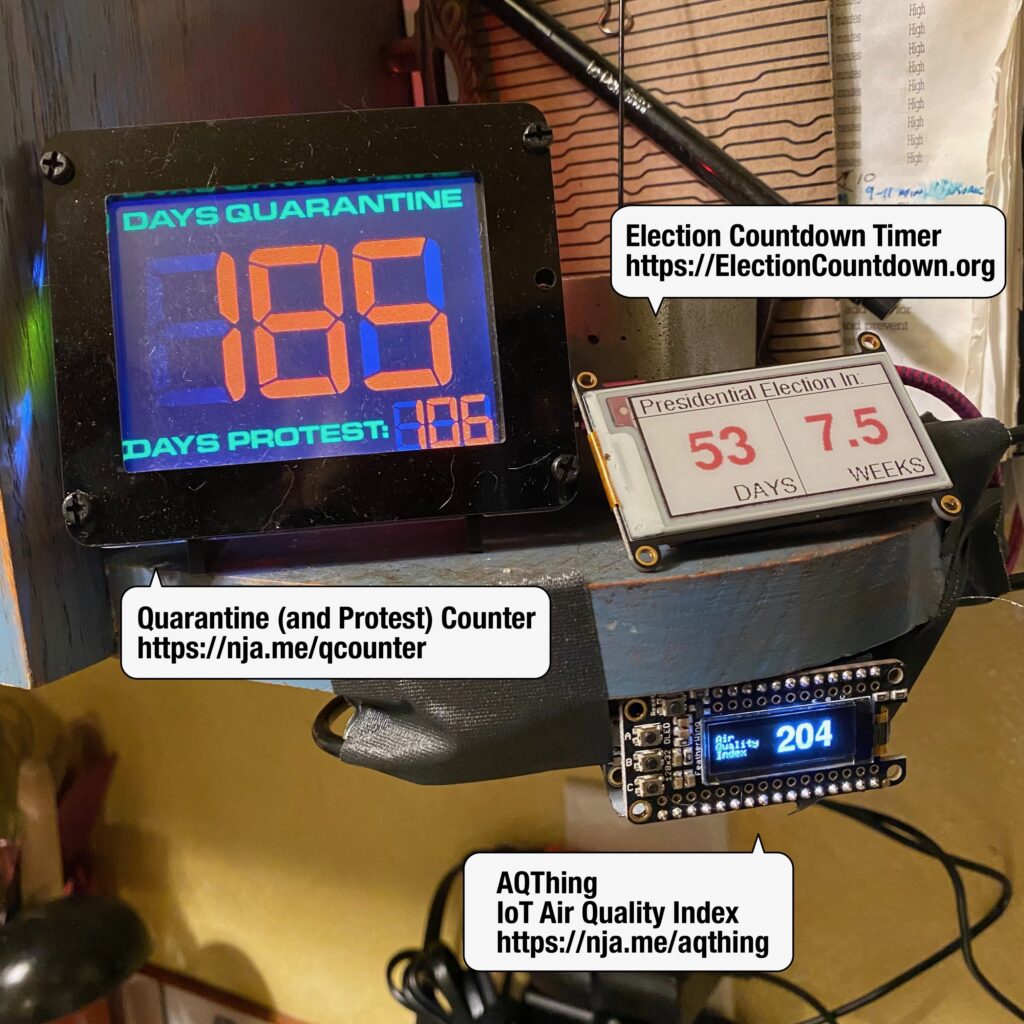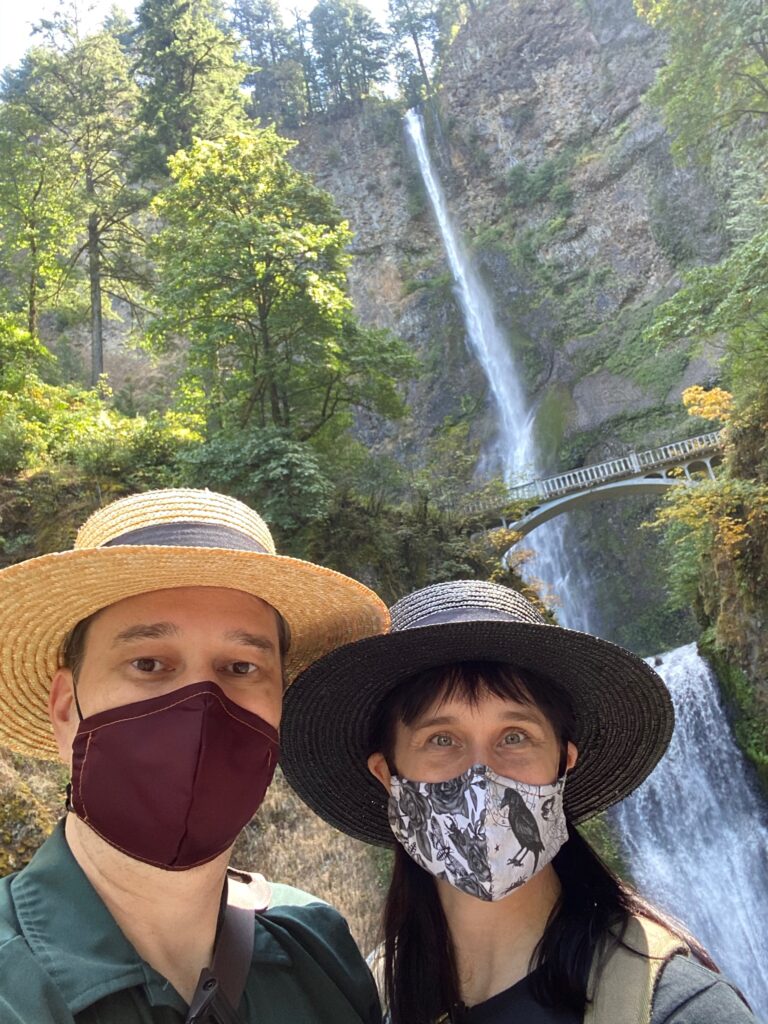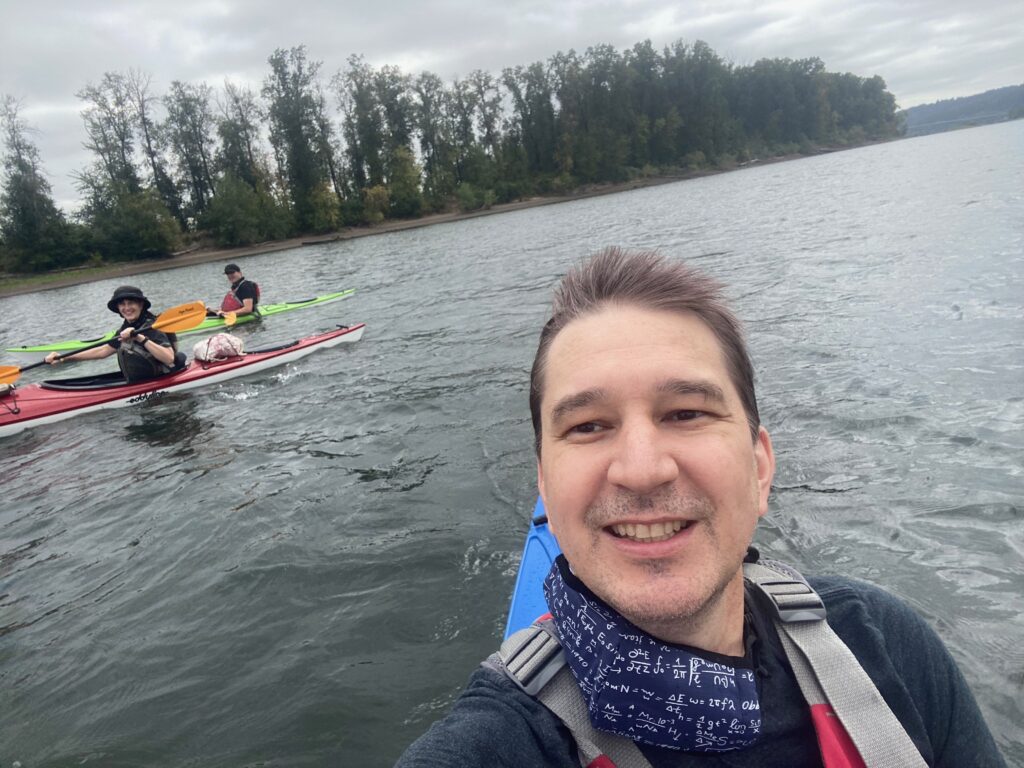What a wild ride this year has been, huh? Earlier this month, Christine and I put together Christmas cards that attempted to summarize the year. We didn’t have enough space to cover everything we wanted, plus 2020 threw us a curve-ball after our print deadline. First, let’s start with our card:
If I had to pick a theme for 2020, it would be “self-isolation.” After our big Disneyland trip at the end of February and two nights out at stage shows, we started staying at home before the official mandates to do so rolled out. Fortunately we both work jobs that can be done from home, but it was a big blow to our social schedule and interactions.
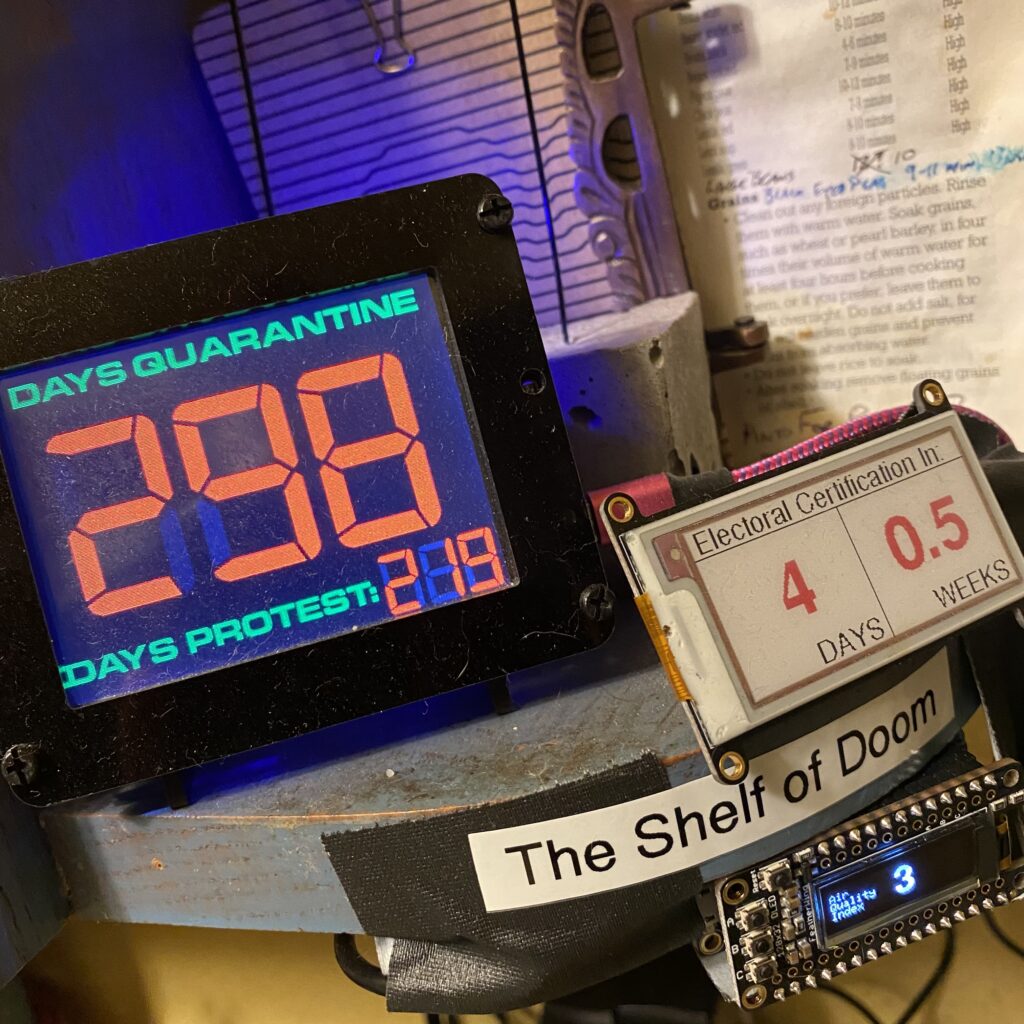
A lot of our activities ground to a halt. But that’s not to say that nothing else happened. Nor is it to say that there isn’t more than a few brief sentences behind the things we called out in our holiday card.
This article is an attempt to add a little more texture and depth to our 2020.
Cats
Last year’s card featured our cats: Norman, the formerly-feral stray that “came with the house,” Cornelius, the naked Sphynx cat, and the two new goofy kittens, Vincent and Basil (who are mostly Sphynx, with a Devon Rex grandparent, and a little more fuzzy than you’d expect).
We all had a good year, and the cats are quite pleased that we’re spending the majority of our lives in the house with them. Even if we sometimes put humiliating clothing on them.
Disneyland & Black Spire Outpost
Christine and I kicked off the year with a two-year anniversary trip in late February to Disneyland. Black Spire Outpost (a.k.a. Batuu, a.k.a. “Star Wars Land”) was the highlight of the trip. It was such a fun immersive experience. It wasn’t just rides and scenery. You could interact with the scenery. You could interact with the employees and they’ll stay in character, using vocabulary, phrases, and greetings unique to the location, and adding to the experience that you’re on an off-world outpost.
In the first 20 minutes of being in that part of the park, a resistance fighter approached and recruited us into some hacking activities. She showed us how we could get close to a computer panel and then use our “data pads” (smartphones) to hack in and retrieve some vital plans. These sorts of missions were set up all around the outpost, both in common areas and in the ride queues. Often, a successful hack meant something happened in the real world: a computer panel would beep and flash, a droid would turn its head around, a space ship would vent smoke. We spent a good chunk of time hacking for the resistance and avoiding stormtroopers and Kylo Ren.
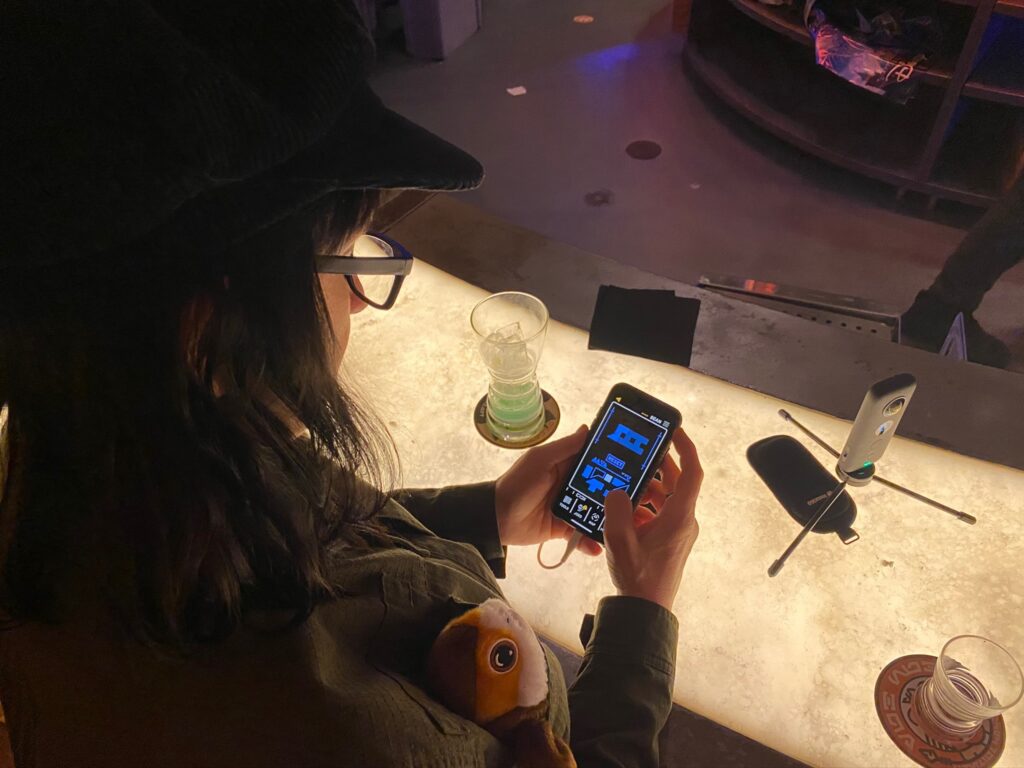
We also spent a good amount of time at the Cantina. In fact, several nights we closed it out, which was fun experience. The energy generators, which are flaky throughout the night, causing brownouts in the bar, finally cut out and the DJ droid shuts off in a dramatic performance.
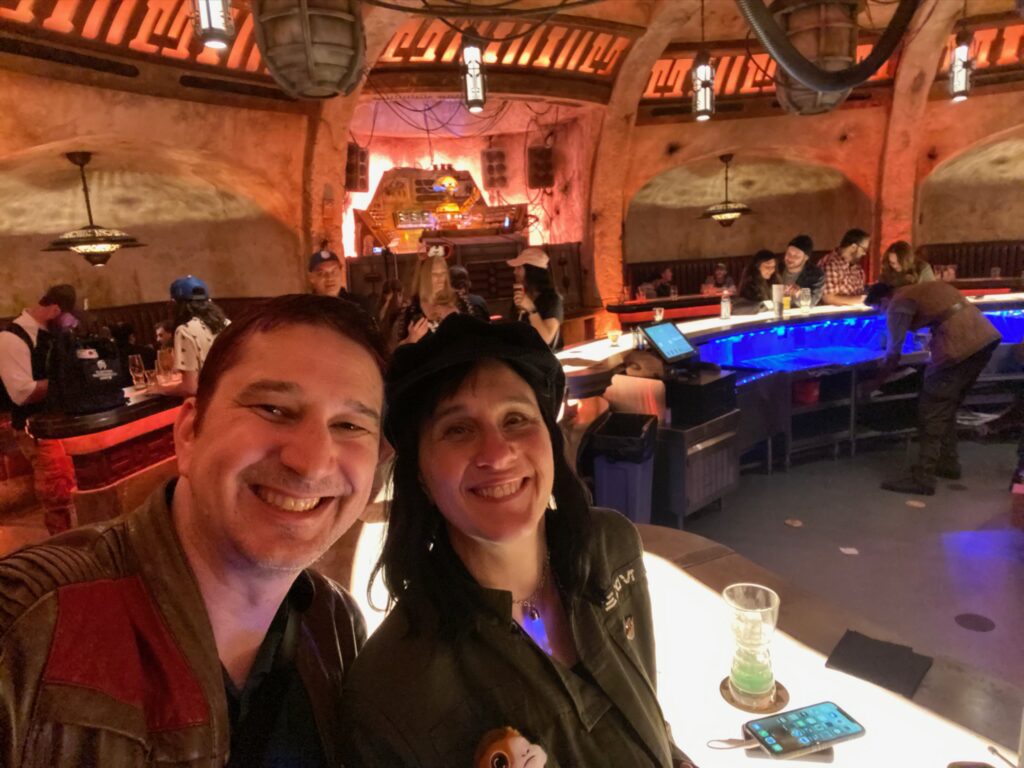
We got to fly the Millennium Falcon and Christine got to meet Chewbacca.
We both built droids and Christine had a magical, emotional experience building her own custom lightsaber.
One of our favorite takeaways from the trip was eating “Ronto Wraps.” These come from a food stall and are framed sort of like galactic street food: meat (or fake meat) cooked over a rocket-engine-turned-roaster, served with spicy slaw and other toppings in a pita. We liked them so much we tried several recipes to make them at home. They’re now a weekly meal to go alongside watching The Mandalorian on Disney. We’ve also made a few attempts at recreating the fancy Cantina drinks, served proudly on the laser-cut replicas of the Cantina coasters I made in the basement.
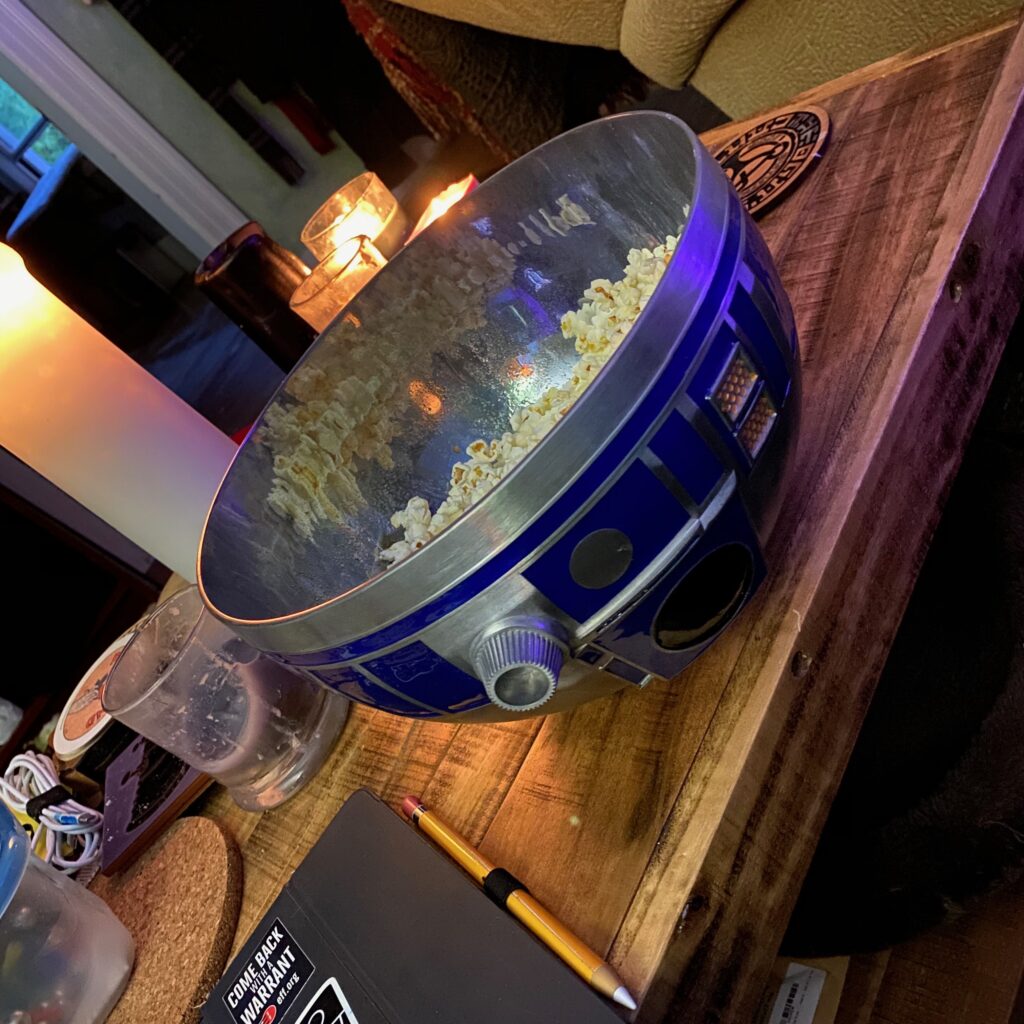
Long story short: it was a fun time and a highlight of the otherwise-mostly-drab year.
Guest House
In case you haven’t heard, I’m building an Accessory Dwelling Unit (ADU). That’s a fancy name for a guest house or granny-flat. Portland has strict limits on city boundaries, to help prevent sprawl and help encourage higher-density housing. Think about how different New York City might be if Manhattan wasn’t an island. It could conceivably have been another sprawly, congested Los Angeles without that hard boundary. In the past decade, Portland has encouraged major-road real estate into retail-below / apartments or condos above. They’ve also pushed to turn residential single-family land to multi-family dwellings. These come in the form of duplex-conversions and tiny houses.
The particular “tiny house” I’m building is just under 750 square feet. Once the pandemic has subsided and folks feel comfortable traveling again, the short-term plan is to use it as a guest house for friends and family as well as for short-term rentals (think Airbnb and Vrbo). This should help offset, and perhaps fully subsidize, the mortgage. Medium and long term plans are still in flux, possibly downsizing into the guest house and renting out the main house, but regardless of what happens, you can be sure they’ll include more international travel.
The new house features a window-bench (as a reading nook) on both the outside and inside of the big bay window! The concrete floors are plumbed to provide radiant heat directly from the floor. The kitchen is smaller than what we’re used to, but still quite competent.
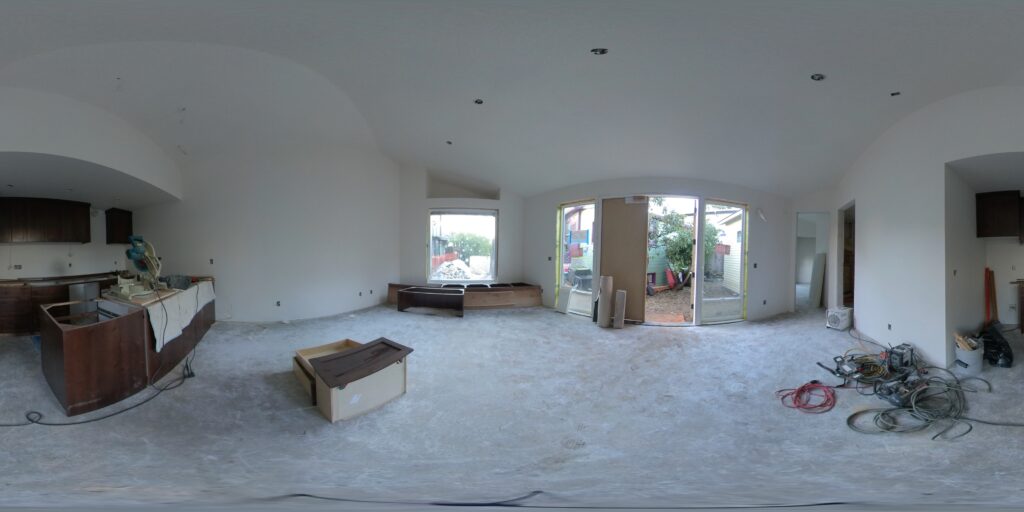
If things go according to schedule (spoiler alert: they probably won’t), the contractors will be complete in late February.
Protesting
You may have seen that the protests in Portland hit national news. It’s true that Portland has the worst track record of police violence in the US. But it’s also true that the protests were mostly peaceful — contrary to national news reports of “antifa violence.”
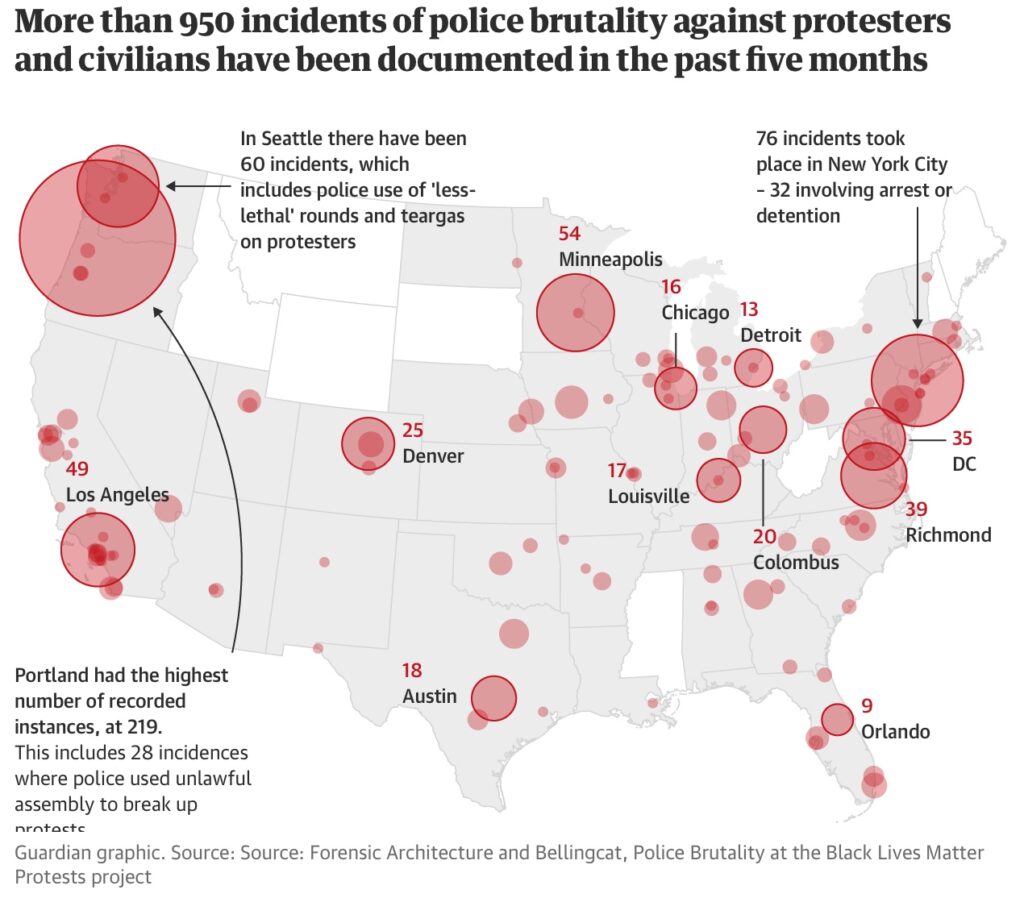
The first night after George Floyd’s murder sparked riots in Portland. Agitators smashed store windows and stole merchandise downtown. But after the initial riot shock, the protests were a peaceful (on the protestors’ end) affair, constrained to two city blocks — a park in front of the courthouse and the neighboring justice center (the “police station”). The rest of Portland, outside those two square blocks, and pandemic aside, was business as usual. Portland wasn’t a “war zone” any more than a sit-in or even a renaissance faire is one. There was a medic tent and a food tent (later a food truck) that took donations and handed out free BBQ dinners. There was a constant flow of people giving speeches.
But you could almost set your watch by the police response. Nightly at about 10pm they’d decide it was suddenly an unlawful gathering and start throwing tear gas and flashbangs (concussion grenades).
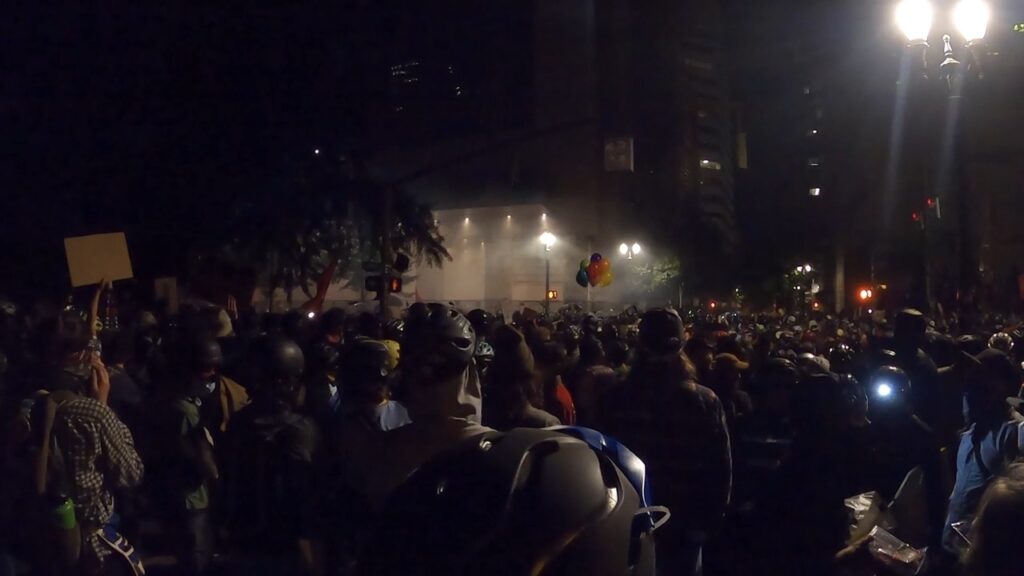
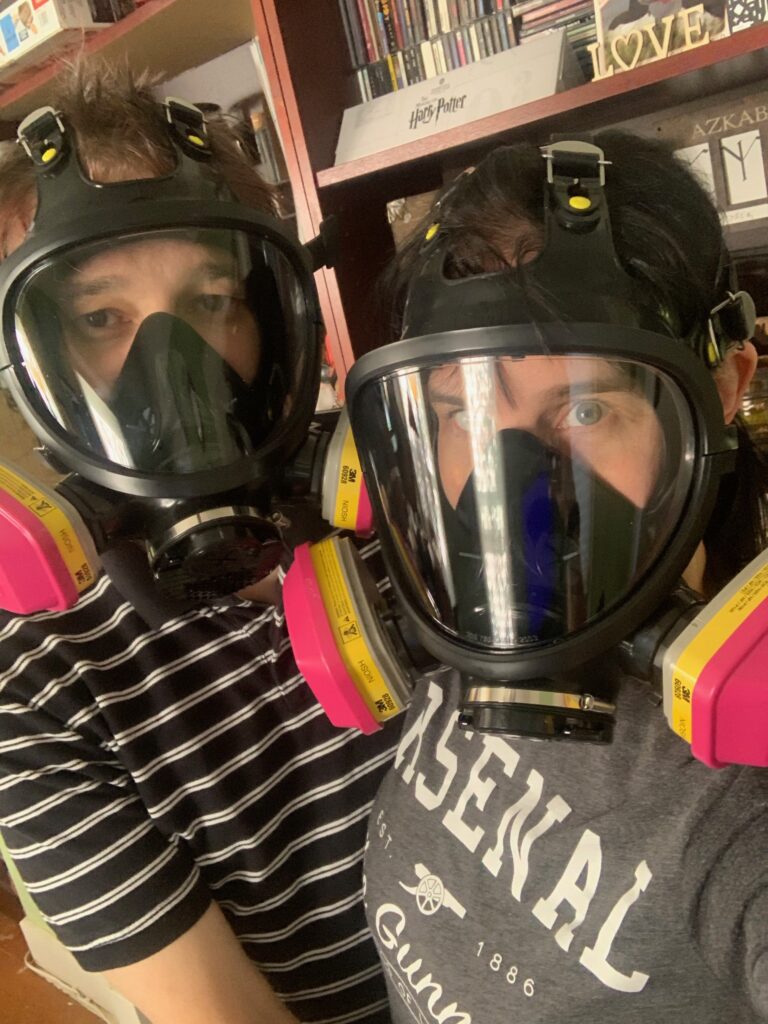
Although we outfitted ourselves to go out a couple of times, it was difficult for us to keep up with the nightly protests. The pandemic led to business closures, which led to a lot of folks out of work, giving them extra incentive to protest night after night. We’re significantly older than the median age of the protestors and start the workday early, which made it rough to continue this trajectory of help.
We tried to help in other ways, donating supplies and money. I also designed and manufactured a large Black Live Matter window decal for our front porch.
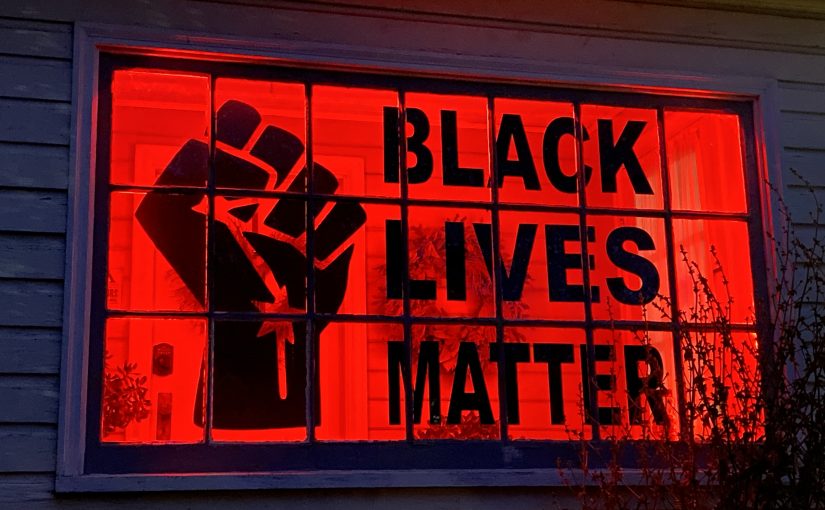
Christine has contributed on the media front. She summarized a lot of the misconceptions of riots and violence in Portland in her YouTube video The Revolution in Portland. Her podcast, The Daily Rose, is a counter-voice to the narrative pushed by the alt-right. It touches on both Portland and national events and news topics.
And if you’re a fan of the musical Hamilton, you may be interested in her parody of the King George song (“You’ll Be Back”) that swaps in Trump as the main character.
Fires
A practical side-effect of gearing up for protests is that we were already prepared for the west coast fires. Portland is known for its clean water and fresh air. But when the fires hit, our air was classified as “hazardous.”

At other times during the pandemic, we’d go outside on walks and hikes. We’d have picnics. We’d generally enjoy the natural surroundings. When the fires hit, even the simple act of going out the back door of the house, to get around to the basement door, to grab something from down there and return to the house, required a mask of some kind. Until we found every possible draft in the house, we even had to wear N95 masks at night when we slept. The indoor AQI was often above 100.
The fires also pushed back construction schedule on the guest house — which is fine. Folks need to stay safe, and subcontractors seem to play the manly-man part and not even wear masks to protect themselves from COVID, much less from the fire smoke.
Fun
The pandemic and social distancing meant we couldn’t hold a third-annual Potions Party. But it didn’t mean we couldn’t have fun. We had quite a few happy hours over Zoom video conferencing, a few even included board games that we’d strategically picked to be compatible with remote play over a video call. We also attended a Zoom-based karaoke night. It was a successful “night out” with friends, despite the video latency causing the karaoke part to be a little less successful.
Christine and I went on a few hikes, had some picnics, and visited Multnomah Falls. Christine loves kayaking and I hadn’t been since I was a kid in scouts. This turned out to be a wonderful activity to do with friends. The size and maneuverability of kayaks meant everyone maintained healthy distances.
Cars
We had a semi-unexpected event occur after publishing the holiday cards. Earlier in the year, Christine’s Prius had its catalytic converter stolen. It was an older model car, and apparently that theft is becoming more and more common. They can be sawed off the car in 60 seconds and then folks can resell them for the raw palladium and rhodium for a few hundred dollars. The age and condition of the car combined with the cost of putting in a replacement almost totaled the car on paper, so she made the difficult decision to sell it. At the same time, my car, at 21 years old — old enough to drink! — hadn’t been doing well. Being a convertible, it has never really weathered the Portland rain terribly well. Since bulldozing the garage to make room for the guest house, it really was on the decline. I ended up donating it to the Humane Society for a tax write-off.
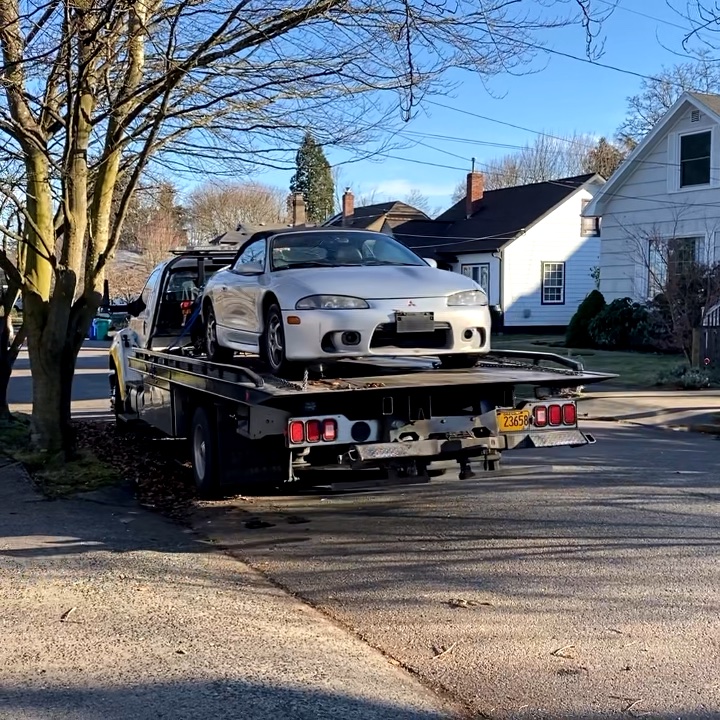
Our original plan was to be carless. We have amazing public transit, with the bus and MAX trains. Taking Lyft (similar to Uber) everywhere can get a little expensive, but nowhere near equivalent to car and insurance payments. For years, we had a local rental service (car2go) that left cars parked around the city that you could unlock and rent by the minute with a smartphone app, then leave elsewhere in the city (as long as it’s in their service area). But the pandemic made public transit and ride-sharing more risky, and car2go ended up closing shop in Portland. We revised our plans to bring in a used car.
My original aim was to get an older pickup truck or Subaru Outback. This would keep the price low and give us some good hauling ability — something I’d been lacking in the 2-seater convertible. Various friends talked me out of the pickup, mostly around comfort, safety, and the security of storing gear. When looking at used Outbacks, I discovered that they hold their value quite well in Portland. For only a few thousand more, I could just get a new one.
We made a plan to test-drive an Outback and also decided to check out the plug-in hybrid Crosstrek while we were at it. The Crosstrek is a little smaller than I wanted and significantly more expensive. It also only seems to come in terrible-blue and less-terrible-blue. I didn’t think I’d like it, but we both loved driving it. Plus, going either hybrid or full-electric is the right thing to do these days. With the plug-in battery, it has a full-electric range of 17 miles if you stay under 60MPH. Beyond that, or faster than that, the gasoline engine kicks in, powering the drivetrain and charging the battery.
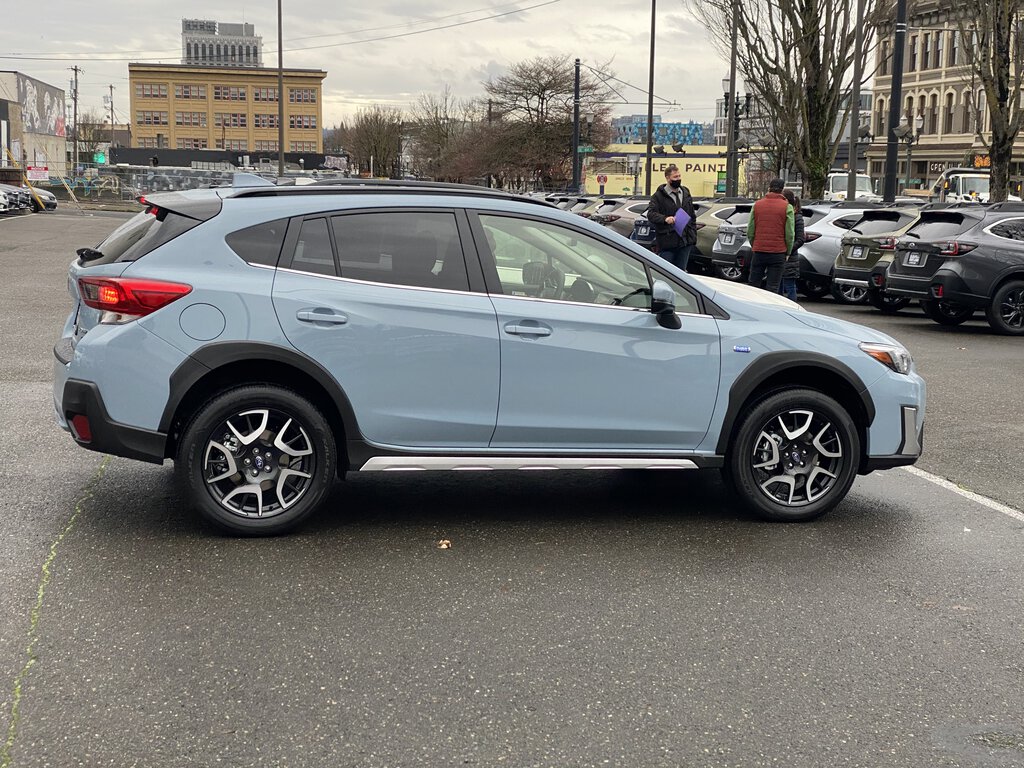
Happy New Year!
Despite the pandemic and political situation, we still managed to have a pretty good year. We’re extremely thankful to have jobs that can be done from home and to still be gainfully employed.
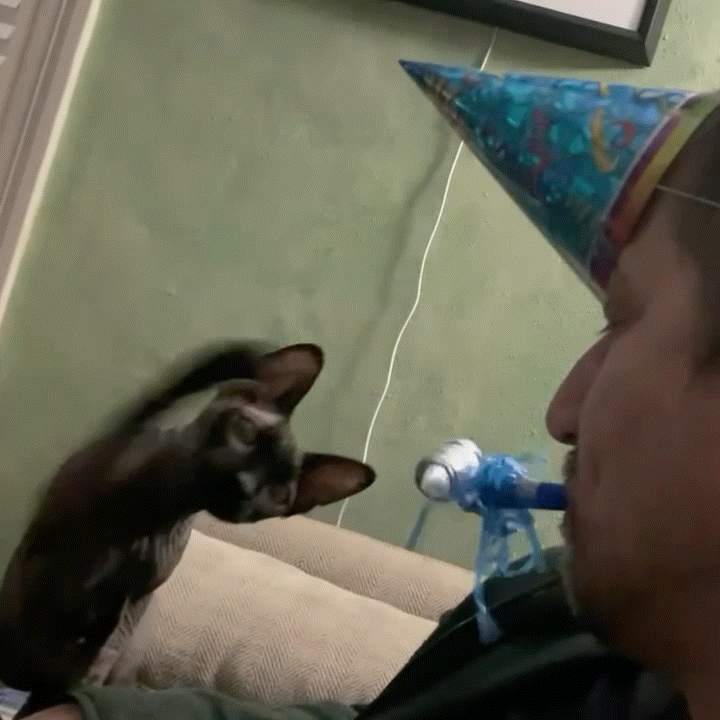
Happy New Year! We hope yours is filled with an abundance of joy and love!
✻ ✼ ✻
